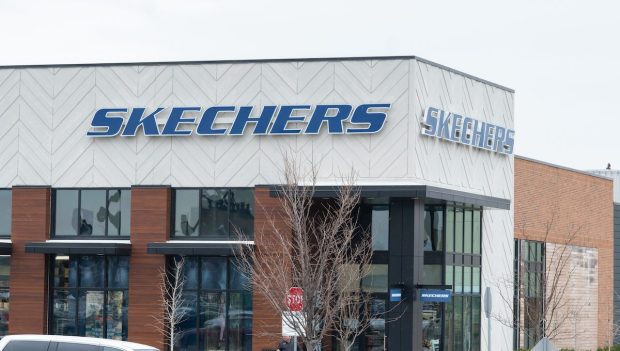Shoe Brands Compete for Digital Sales as D2C Volumes Grow

Footwear giant Skechers is seeing its eCommerce investments pay off. The company shared Tuesday (Oct. 25) in its third-quarter 2022 earnings announcement that direct-to-consumer (D2C) sales were up 12% year over year.
“As one of our key long-term growth strategies, the investments we are making in our direct-to-consumer segment are yielding strong results, as we continue to expand our international online presence and enhance our omnichannel capabilities,” Chief Financial Officer John Vandemore told analysts on a call. “This further enables us to build direct relationships with our loyal consumers, showcase the breadth and depth of our product portfolio [and] attract new consumers.”
The $72.8 million increase in D2C sales brought the channel’s total to $686.8 million, which included a 15% year-over-year rise in domestic D2C sales and a 9% rise internationally. Regarding the latter, Vandemore said that, as the company launches this eCommerce business in new countries, it develops an “online relationship” in areas where it has “never had the ability to perform in before.”
Yet, the downside of the D2C business is that, in markets where the company is unable to drive enough sales and acquire enough customers, the investment in the technology can be prohibitive. After all, the company invested $30.8 million in the quarter on “our retail stores and direct-to-consumer technologies.”
Vandemore said the “one drawback” of the channel was that, in China, pandemic-related headwinds kept the D2C bet from paying off.
The footwear brand’s overall D2C growth comes as many of its competitors look to grow their own eCommerce businesses. Nike, for one, shared in September that it is building out its D2C business, with sales through the channel up 8% last quarter, and CEO John Donahoe said selling directly online “has become an even bigger part of our business.”
Similarly, Deckers Brands, parent company of UGG, Teva, Hoka and others, announced in its most recent earnings report in July that D2C net sales rose 15% in the quarter to $185 million. President and CEO Dave Powers said customer acquisition for the channel grew 48% year over year and retention increased 58%, “with gains among 18- to 34-year-old consumers far outpacing these increases.”
Moreover, casual footwear-maker Crocs announced in August that D2C revenues, including retail and eCommerce, were up 22.8% in Q2.
Multi-brand retailers are also taking the hint from footwear brands’ D2C growth. Take Foot Locker, which announced in August the selection of a new CEO, Mary Dillon, who came to the position directly from the top role at Ulta Beauty, where she had focused on building out the beauty firm’s eCommerce operations.
Certainly, there is a wide audience for these eCommerce efforts. Research from the study “Super Apps for the Super Connected,” a PYMNTS and PayPal collaboration that drew from a survey of more than 9,900 consumers across the United States, the United Kingdom, Australia and Germany, found that 58% of millennials in these four countries had shopped for retail products online in the prior 30 days. Similarly, 47% of Generation Z consumers, 54% of bridge millennials, 48% of Generation X consumers and 38% of baby boomers and seniors said the same.
For all PYMNTS retail coverage, subscribe to the daily Retail Newsletter.
